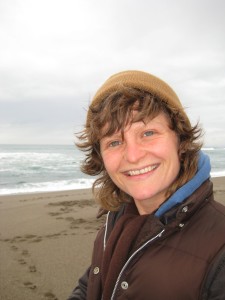This post is the third in a three-part series (see parts one and two) featuring Char Booth, the Director of Research, Teaching, and Learning Services at the Claremont Colleges Library in Claremont, CA. She works with faculty and students at the seven colleges to integrate information literacy concepts into coursework, often via Wikipedia assignments.

Our previous posts focused on framing Wikipedia assignments to make the most out of the collaborative nature of Wikipedia editing, and to encourage students to critique and engage with ideas of information privilege, knowledge construction and the public sphere.
In this post, we’ll look at ideas for designing a successful Wikipedia assignment.
Collaboration
In higher education, librarians are a known ally to any faculty or courses dealing with information literacy. Engaging research literature is crucial in Wikipedia assignments, Char Booth says, and so librarians are “natural collaborators.” Similarly, “networking and promoting the potential benefits and challenges of learning through Wikipedia with on-the-ground examples can lead naturally to enthusiastic collaborations.”
Booth suggests that faculty considering a Wikipedia assignment talk about course design with a librarian early. That conversation can shape how the assignment is presented to students, and help to incorporate scheduled workshops or other opportunities the library can line up. It’s also important to see where each party stands in regard to their own knowledge of Wikipedia, and identify shared weak spots. The Wiki Education Foundation’s resources and materials can help with those, Booth said.
Is Wikipedia right for your course?
Booth framed a recent Wikipedia assignment in a first-year seminar class focused on educational theory through a critical lens, because a critical analysis of Wikipedia (and knowledge construction in general) was a desired outcome of the course. In this case, the assignment started with readings from critical theorists such as bell hooks, Paolo Freire, and John Dewey, and conversations were conducted in an open manner in which “all contributions were seen as valid.”
One important component of teaching the Wikipedia assignment in this and other critically-focused courses is contrasting the values of an open ecosystem against the mechanics of closed knowledge ecosystems. In the above example, Booth set the stage by “challenging the fallacy that information is free by diagramming the library’s multi-million dollar materials budget against the “open web,” then facilitating a discussion about the implications of a system in which significant areas of knowledge are available to a privileged few (e.g., them).”
Booth’s Wikipedia assignments bring a lot of critique of information privilege, because that’s exactly what the assignments are intended to do in these particular courses. The critical examination of Wikipedia and information privilege can be folded into contexts such as political science, media, or cultural studies, she said. Along the way, student editors develop writing skills, media/information literacy skills, critical thinking and research skills, collaboration skills, and technical/communication skills.
How do you know if a Wikipedia assignment is a good fit for your objectives?
“I think an instructor first needs to be interested in Wikipedia’s potential as a platform for developing critical thinking skills as well as content expertise, and willing to put in the work to make engaging with Wikipedia a good experience for students,” she suggests. “I think that most academic disciplines can engage successfully with Wikipedia in the classroom, but considerable planning should occur up front.”
Scaffolding
Something that really stands out about the student work from Booth’s Wikipedia collaborations is that they combine a large number of resources without losing sight of their structure. Consider the arrangement of the student-edited article on constitutional patriotism in an introductory American Politics class, for example. The article clearly positions the intellectual debate in a comprehensive way and is thorough and easy to follow, despite being a collaboration of student editors.
“Poor article structure and redundancy was an issue the first time we did the assignment three years ago, so we started the draft outline as a way to address the problem, to get students communicating about their respective parts and how they work together,” Booth says. “As for the in-depth lit review angle, we emphasize rigorous research and substantiation of their articles throughout so it becomes a natural consequence of this requirement.”
Other resources
On the information literacy front, Booth’s institution has been working to develop a series of standards that are useful in the context of the Claremont Colleges. These are influenced by the Association of College & Research Libraries IL Competency Standards, as well as a new Framework for Information Literacy for Higher Education, which is under development.
Of course, you can also find many Wiki Education Foundation resources on our page for instructors and contact our staff for additional guidance on course design (including additional interactive tools).
This was part three of a three-part series about Wikipedia and information privilege. You can read part one here or part two here.
Char Booth blogs at info-mational and tweets @charbooth.
